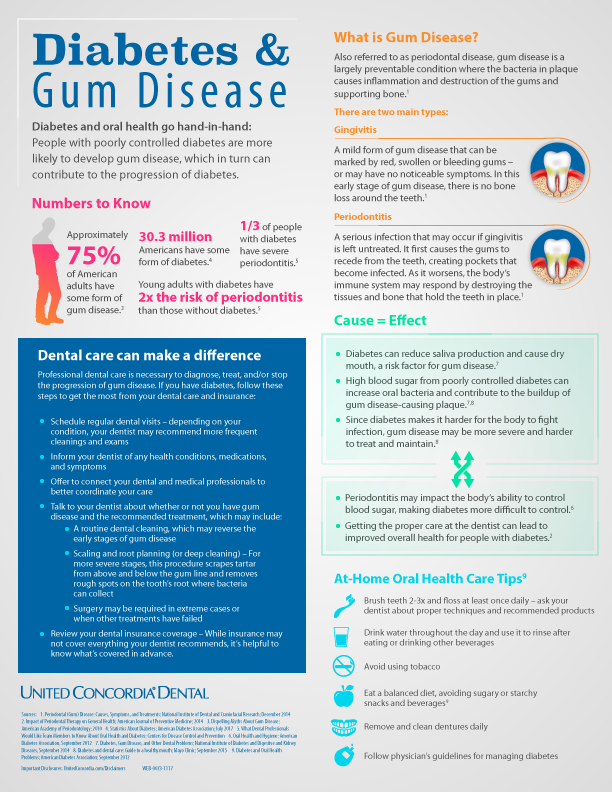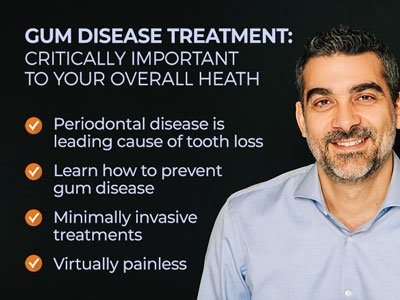Yes, health insurance can cover gum disease. Coverage varies by plan and provider.
Check your specific plan for details. Gum disease, a common oral health issue, affects many people. It can lead to serious health problems if untreated. Health insurance often covers dental issues, but policies differ. Some plans include comprehensive dental care, while others may only cover basic treatments.
Understanding your health insurance policy helps you know what’s covered. This blog will explore if gum disease treatments are typically included in health insurance plans. We’ll also discuss what to look for in your policy and how to maximize your benefits. Stay informed about your coverage to ensure you receive the necessary care for your gum health.

Credit: www.uccitdp.com
Introduction To Gum Disease
Gum disease is a common oral health issue. It affects the tissues around your teeth. If untreated, it can lead to tooth loss. Many people do not realize they have gum disease. The early stages are often painless. Understanding gum disease is essential for maintaining good oral health.
Types Of Gum Disease
There are two main types of gum disease:
- Gingivitis: This is the mild form. It causes gum redness and swelling. Bleeding during brushing is common.
- Periodontitis: This is a more severe form. It can damage the bones supporting your teeth. It may lead to tooth loss if untreated.
Causes And Symptoms
Poor oral hygiene is a major cause of gum disease. Not brushing and flossing allows plaque to build up. Plaque is a sticky film of bacteria. Other causes include:
- Smoking
- Diabetes
- Hormonal changes
- Medications
- Genetics
Common symptoms of gum disease include:
- Swollen, red gums
- Bleeding during brushing or flossing
- Receding gums
- Persistent bad breath
- Loose teeth
Early detection is key. Regular dental check-ups can help catch gum disease early. This allows for easier treatment and better outcomes.
Health Insurance Basics
Understanding health insurance can seem challenging. This guide simplifies the basics to help you. Knowing what your plan covers is crucial. Let’s explore the fundamentals of health insurance.
Types Of Health Insurance Plans
There are various types of health insurance plans. Each offers different benefits and coverage levels. The most common types include HMO, PPO, EPO, and POS plans.
HMO stands for Health Maintenance Organization. It requires you to use a network of doctors. PPO stands for Preferred Provider Organization. It offers more flexibility in choosing healthcare providers.
EPO stands for Exclusive Provider Organization. It combines aspects of HMO and PPO. POS stands for Point of Service. It allows you to choose between HMO and PPO services. Understanding these types helps you pick the right one for your needs.
Common Coverage Areas
Health insurance typically covers several areas. These include doctor visits, hospital stays, and prescription drugs. Preventive services like vaccinations are often covered.
Many plans also cover mental health services. Dental and vision care may be included in some policies. Understanding common coverage areas helps you know what to expect from your plan.
Coverage For Dental Health
Understanding dental health coverage can be confusing. Many wonder if their health insurance covers gum disease. Dental health is crucial for overall well-being. Knowing what your insurance covers helps in planning for future dental care.
Difference Between Health And Dental Insurance
Health insurance and dental insurance are different. Health insurance covers general health issues like surgeries, hospital stays, and medications. Dental insurance focuses on dental care. This includes cleanings, x-rays, and treatments for dental issues.
Health insurance rarely covers dental procedures. Even if dental issues affect your overall health, you need separate dental insurance. Dental insurance is more specific. It targets issues related to your teeth and gums.
Typical Dental Coverage
Dental insurance plans vary. Most plans cover preventive care. This includes:
- Regular cleanings
- Check-ups
- X-rays
Some plans cover basic procedures like fillings and extractions. Coverage for major procedures like root canals and crowns is often partial. Gum disease treatment depends on your plan. Some plans cover it fully. Others may cover only part of the treatment costs.
| Procedure | Coverage |
|---|---|
| Cleanings | Usually 100% |
| Fillings | 50% to 80% |
| Root Canals | 50% to 70% |
| Gum Disease Treatment | Varies by plan |
Understanding your dental insurance is key. Always check what is covered before starting treatment. This helps avoid unexpected costs.

Credit: www.thekidsdentalofficeofphoenix.com
Specifics Of Gum Disease Coverage
Understanding whether health insurance covers gum disease is important. Different insurance plans offer varying degrees of coverage. It is crucial to know what your specific plan includes.
Procedures Often Covered
Most insurance plans cover basic gum disease treatments. This includes cleanings and check-ups. Deep cleanings and scaling procedures might also be covered. Many plans offer coverage for root planing too. Some plans include surgical treatments for severe cases. Always check your policy details.
Exclusions And Limitations
Not all treatments are covered by insurance. Cosmetic procedures are often excluded. Treatments like teeth whitening usually aren’t covered. There may be limits on the number of visits per year. Some plans require a waiting period before coverage starts. Always read the fine print. Understand your plan’s limitations to avoid surprises.
Steps To Verify Your Coverage
Understanding whether your health insurance covers gum disease can be confusing. To help you, we have outlined the steps to verify your coverage. These steps ensure you know what your policy offers and how to contact your insurance provider for more details.
Reading Your Policy
The first step is to read your policy carefully. Look for sections that mention dental coverage or oral health. Pay close attention to the fine print. Some policies include gum disease treatment under specific conditions. Check if periodontal treatments are listed. This can include deep cleanings, scaling, and root planing.
Contacting Your Insurance Provider
If your policy is unclear, contact your insurance provider. Call the customer service number on your insurance card. Ask direct questions about gum disease coverage. Be specific about the treatments you need. This could include exams, cleanings, or surgical procedures. Make notes during the call for future reference.
Maximizing Your Benefits
Maximizing your health insurance benefits is essential, especially for dental care. Gum disease is a common problem that can be expensive to treat. Understanding how to make the most of your insurance can save you money and improve your oral health.
Preventive Care
Preventive care is one of the best ways to maximize your health insurance benefits. Most insurance plans cover preventive care at no extra cost. This includes regular cleanings, exams, and X-rays. These services help detect gum disease early, preventing costly treatments later.
Here’s a quick overview of typical preventive services covered by insurance:
| Service | Coverage Frequency |
|---|---|
| Cleaning | Twice a year |
| Exams | Twice a year |
| X-rays | Once a year |
Regular visits to the dentist help maintain oral health. They also prevent gum disease from progressing.
Utilizing Network Providers
Using network providers can help you save money. Insurance companies have agreements with certain dentists. These dentists offer services at lower rates. This means you pay less out-of-pocket for treatments.
Here are some benefits of using network providers:
- Lower treatment costs
- No need to file claims
- Higher coverage rates
To find a network provider, check your insurance company’s website. You can search for dentists by location and specialty.
Maximizing your benefits involves understanding your insurance plan. It also means using preventive care and network providers. These steps will help you manage and treat gum disease effectively.
Out-of-pocket Costs
Understanding the out-of-pocket costs for gum disease treatment under health insurance is crucial. These costs can vary widely and can impact your budget significantly. Below, we break down the key components of out-of-pocket costs and provide tips to manage them effectively.
Understanding Co-pays And Deductibles
Co-pays and deductibles are common terms in health insurance. A co-pay is a fixed amount you pay for a healthcare service, usually at the time of the visit. For instance, you might pay $20 for a dental check-up.
A deductible is the amount you pay before your insurance starts to cover the costs. If your deductible is $500, you must pay this amount out-of-pocket before your insurance pays for any treatment.
Here’s a simple table to illustrate:
| Term | Definition | Example |
|---|---|---|
| Co-Pay | Fixed amount for a service | $20 per dental visit |
| Deductible | Amount paid before insurance kicks in | $500 annual deductible |
Managing Unexpected Expenses
Unexpected expenses can arise even with insurance coverage. It’s important to plan and budget for these costs.
Here are some tips to manage these expenses:
- Set aside a small amount monthly for healthcare costs.
- Check your insurance policy for covered treatments.
- Discuss payment plans with your dentist for large expenses.
By understanding co-pays, deductibles, and planning for unexpected costs, you can better manage the financial impact of treating gum disease.

Credit: mdperio.com
Alternative Financing Options
Dealing with gum disease can be expensive. Health insurance may not always cover all the costs. Fortunately, there are alternative financing options to consider. These can help ease the financial burden and ensure you get the necessary treatment.
Payment Plans And Loans
Many dental offices offer payment plans. These plans allow you to pay for treatments over time. This can make expensive treatments more manageable. You can often set up monthly payments that fit your budget. Some dental offices also partner with financing companies. These companies can offer loans specifically for dental care. This can be a good option if you need extensive treatment right away.
Government Assistance Programs
Some government programs provide help for dental care. Medicaid is one such program. It offers dental benefits to eligible individuals. Coverage may vary by state. Check with your local Medicaid office for details. Another option is the Children’s Health Insurance Program (CHIP). CHIP provides dental coverage for children in low-income families. This can help ensure your kids get the care they need.
Frequently Asked Questions
Does Insurance Cover Gum Disease Treatment?
Health insurance may cover gum disease treatment, depending on your plan. Check your policy for specific coverage details.
What Dental Treatments Are Covered By Insurance?
Most insurance plans cover preventive care like cleanings and exams. Some plans cover treatments for gum disease, cavities, and more.
Can I Get Insurance For Periodontal Disease?
Yes, many insurance plans offer coverage for periodontal disease treatments. Review your plan to understand the extent of coverage.
How Do I Know If My Insurance Covers Gum Disease?
Review your health insurance policy or contact your provider. They can provide details on gum disease coverage.
Conclusion
Understanding your health insurance coverage is crucial for managing gum disease. Always check your policy details. Coverage can vary widely. Consult with your dentist and insurance provider. This ensures you get the needed treatments. Don’t ignore gum disease symptoms. Early treatment can save your teeth and health.
Stay informed and proactive. Your well-being depends on it.